The Global Citizens Initiative hosts an annual Fellowship Summit to cultivate young “global citizens” to become “lifelong leaders of positive change.” In July of 2019, 28 high school students from 15 different countries gathered together for a 10-day experience in Tokyo, Japan. These students are each responsible for the design and development of a service learning project to be carried out over the course of a 10 month period. Their projects are “glocal” – addressing a global problem at a local level. In Tokyo, the students were supported by a group of Teaching Assistants, themselves all alumni of the GCI Fellowship Program. The Good Project has been in consultation with GCI since its formation, and we follow the work of its participants with interest. We recently had the opportunity to catch up with several GCI alums and ask them about their work, their thoughts about Good Work, and reflections about their experiences with GCI.
My name is Marisa Nakagama, and I am a rising senior studying Animal Science and Nutrition & Health at Cornell University. I was born in Westchester, NY but have lived in Connecticut, Illinois and even Saba, a Dutch Carribean island! I love studying the connection between animal, environmental, and human health and hope to become a doctor who emphasizes this significant intersection. Outside of school, I have a huge passion for weightlifting and exploring different cultures through cuisine.
What does it mean to do “good work” today?
As simple as it sounds, I think doing “good work” today starts from a yearning to learn about others, but also yourself, and then take action. Whether this work represents the quality of your workplace or charitable acts, this “goodness” stems from trying to improve yourself or the community around you, and this starts with learning. By “learning,” I do not necessarily mean education. I am talking about genuinely sitting down and listening to what people say and think while also understanding yourself and recognizing what you have to offer as well.
Everyone experiences life differently, which means everyone has a story to tell and lessons to share. Through the simple act of listening, you connect to different people, career industries, and cultures. With productive listening comes respect and appreciation for each other. I think this inevitably leads to stronger self-esteem, but it also builds stronger relationships. All these little steps, from self-confidence to stronger connections with the people around us, can help us learn about the communities around us.
Tell us about your understanding of community. What are the communities of which you feel a part?
To me, a community means a group of people, a place or space where I belong and where I can learn and grow. A community doesn’t judge or coerce me into changing who I am, but it appreciates my individuality, keeps me in check, and continuously motivates me to be better. One community I am a part of is my university. This community, from my professors to my peers, constantly pushes me to expand my knowledge, challenges me to get out of my comfort zone, and is shaping me into the person I am becoming. This community is not only academic but social, one where I can continue to strengthen my relationships with my friends.
GCI has been a community I have loved being a part of since 2014. Even though its members are all over the world, the sense of community and tremendous love I feel from GCI shows how strong this community is. It’s incredible to see it grow every year. I’m so grateful for social media and technologies such as Zoom because I can stay connected to this community no matter where we are in the world. With COVID-19 this year, unfortunately the summit planned for 2020 was cancelled. However, GCI and its members didn’t fail to stay connected, through Zoom virtual harkness sessions and hangouts! A great session I got to participate in was with a pharmacist, Dr. Tavajay Campbell. While we all got to learn more about the virus and its vaccine development from him, we also got to engage in further discussions such as the recent BLM movement. It was wonderful to be able to remain connected with the GCI family and continue to hear international perspectives all from my room in New York.
Another community I am a part of is my family. I am extremely fortunate to have such a supportive family behind me. I recognize that I wouldn’t be half the person I am today or even where I am today without all the hard work my parents, grandparents, and others (the list goes on) have accomplished.
Finally, another community important to note is my local community. Whether that be the friendly chef at the local deli who always makes my day with the most delicious lox bagels, or the loving neighbors I always see during my walks with my dogs, these people and the small but exciting interactions I get to have with them make me happy, and shape the person I am, every day.
Is there a particular role model who has helped inspire you to do “good work,” either real or fictional? What is it about this role model that has inspired you?
My dad has always been my role model. When he first graduated university in Japan (with a major in American History), he took the stereotypical Japanese white-collar road to work in finance. Although things are different now, back then it was pretty standard that most college graduates simply found an office job within the country. During his time working in finance, he had a business trip to attend in New York City. Once he got to New York, he quit his job. He realized it wasn’t what he wanted to do at all. He returned to college and ultimately attended medical school in a new country where chemistry and anatomy weren’t nearly as challenging as the language. Though it was a daunting challenge, my dad recognized and followed his own dreams. When applying the idea of “good work” to his journey, I think what resonates is that he learned about himself and recognized his finance job wasn’t fulfilling. Though he was significantly older than most medical school students, he was able to step forward and take on a challenge. Rather than continuing work in a field he wasn’t very interested in, he used his passion to accomplish productive “good work” by helping patients through medicine. Making such a drastic career change can be difficult for some. Personally, I’m not sure if I could take such a sudden turn in my life if I had already been working within a field for over ten years. He inspires me to push myself out of my comfort zone and pursue my long-term goals. as long as I have a passion for it, even if the journey might be difficult.
Tell us about your work. What projects are you currently involved with? How might what you are doing now relate to the work you began with GCI?
Currently, I am involved with a public health project that emphasizes the importance of outdoor education for the mental health of school children. Outdoor education has substantial benefits for children ranging from increased confidence to higher empathy towards others. Through literature reviews and advocacy research, we are finding ways to make a change in school curriculums locally (and hopefully nationally) to include more time outdoors.
Within my preprofessional fraternity, we support the Gift of Life Marrow Registry and hold blood drives, knowing that as students, taking a little time out of our days to donate blood and stem cells could change someone else’s life. We also consistently hold fundraisers for many other local and national organizations, such as the Finger Lakes Cancer Resource Center and the International Medical Corps. Additionally, we hold educational events for our school community. Our most recent event was a professional panel related to the COVID-19 pandemic, led by our university’s notable virologists.
Finally, another club I am involved with is Merlin’s Kids, an organization that trains rescued shelter dogs to become service dogs for special needs individuals, disabled war veterans and other candidates who need physical and emotional support. I adore the organizations mantra: “Saving two lives at a time.”
While all of these projects aren’t necessarily related, I believe they are small but significant changes I can make in my community and definitely relate to the GCI goals of empowering lifelong leaders of positive change. I have definitely utilized the skills, lessons, and stories I learned from GCI, such as leadership and communication, for the projects I am involved with today.
How do you feel your current projects are connected or not to this view of “good work”?
I think all of my projects aim for positive outcomes and consistently recognize that nothing is perfect—there is always room for improvement whether that be challenging myself or challenging society. Talking to teachers and principals and learning how local schools operate, I can contribute to improving children’s early mental and physical development by trying to get them outside, challenging the norm of the current curriculum. Preparing philanthropic events and attempting to make the most of my time within my university community, I might be a catalyst in finding a donor for someone who needs a bone marrow transplant. Getting to know a sweet lady with anxiety problems, I can help find her the perfect fluffy helping hand (or should I say paw?). Rather than focusing simply on myself, learning about others’ lives and seeing how I can help others is, I think, “good work.” Ultimately, it makes me feel confident in myself as a great individual who can make productive small changes in society.
How and where do you find meaning in your work?
I find meaning in my work by recognizing that my ability to have the time, the resources, and the support system to pursue actions in order to help others is a gift. I am so grateful that I get to go to a wonderful university, experience the experiences I have been offered, and am cherished by the people who surround me. By appreciating what I have, I feel the motivation to try and make a difference in others’ lives. I know I wouldn’t be where I am today without the sweet helping hands that were offered in my life. The most satisfying feeling is receiving a smile from someone else and that is what I aim for every time I work.
Tell us about your biggest challenges, and how you work to tackle them.
My current biggest challenge is the MCAT. When I write it out, it seems silly: it’s just a “test,” right? But it seems like a ginormous hurdle for me and my future goals because, without a good score, how can I become a doctor? It has been the test I have dreaded ever since I decided, “Yes, I want to become a doctor,” and it’s perhaps the most terrifying thing to me right now. Biology. Biochemistry. General Chemistry. Organic Chemistry. Physics. And more. It sends shivers down my spine.
I just recently started studying, and I think the thing that has helped me the most is to create a schedule and keep myself accountable. The more I study consistently, the less scared I am. Another way I’ve been tackling the challenge is to not doubt myself so much. A problem I continuously have is that I doubt myself. When I feel this way, I try to reward myself for even little accomplishments. For example, if I was feeling completely unmotivated and unproductive one day, I’d push myself to at least go through some flash cards and call it a day. While I didn’t get through as much as I should have, I tell myself that I at least did something which will definitely show in my progress overall. Again, little steps!
Have you ever faced a dilemma where you weren’t sure what the “right” course of action was? How did you handle this situation?
Recently, the BLM movement has gained huge momentum on Instagram, with users and influencers posting infographics, quotes, and more. I absolutely loved the idea of using such a powerful outlet to promote the movement, believing I could further educate myself, both on the movement and on the history of black oppression in the country. However, I came across a dilemma. Some users aggressively call out those who chose to “stay silent” on the app, those who choose not to post anything on their profiles in support of the movement. I was one of those people who “stayed silent,” but I didn’t “stay silent” because I didn’t care about the movement. Though I was silent on Instagram, I was, and still am, proactive and constantly trying to read, watch, listen to many different sources to educate. I didn’t feel as though I needed to post every day to show my support and people in my friend group also felt the same way. Unfortunately however, our silence on a social media platform caused the loss of a friend within our group: we were “unfollowed”, “unfriended” and “blocked”. At that point, I didn’t know what to do. I didn’t want to lose a friend. But I also asked myself, if I posted a picture all of a sudden, would I be doing it just “for the trend” and to prevent losing a friend? I had heard plenty of stories of broken friendships and individuals who were ostracized, simply because they didn’t post a black photo for #BlackoutTuesday. After days of thinking, I decided to post one post, one that explained that I support the movement but that I also believe that now is not the time where people should be causing more animosity. Now is not the time where we should judge one another based on what we say or do on social media. Now is not the time to cause more separation between people. Now is the time for everyone to come together, regardless of race, gender, sexuality, and be better in solidarity, whether that be on social media or outside of it. While at first I was torn about the “right” action, I was brave enough to post something about my thoughts without changing who I am or what I was doing based on a social media trend.







